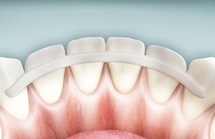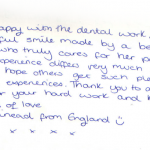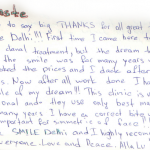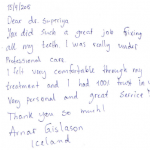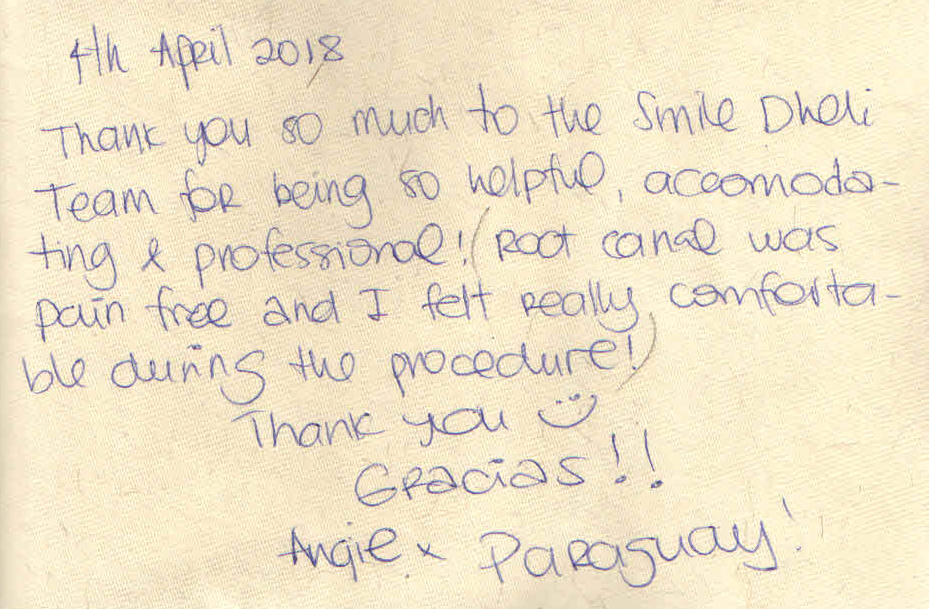This Is How Your Mobile Teeth Can Be Saved
Gum disease is the main cause of tooth loss and loose teeth in adults. Gum disease, if left untreated will result in the loss of the surrounding bone and tissues that hold teeth in place. Frequently the problem is complicated by heavy bite stress.
The problem is that it can be silent and you would not come to know that you have a problem until it is severe. This is one of the most important reasons that you should go for regular dental check-ups, even when you think your teeth are fine.
Healthy teeth are normally fastened tightly by their roots into the jawbone and the continuous biting and chewing forces will not budge them.
Loose teeth can make eating uncomfortable, as biting pressure can cause the teeth to move and pull away from the gum.
The teeth that remain may be incapable of withstanding the increasing chewing forces placed upon them. When teeth become loose, it can lead to shift or migration of the tooth in the jaw (pathologic migration) as chewing forces can cause them to tip toward the cheeks, bite collapse, the tipping and displacement of the remaining teeth, changes in the facial contours i.e. lower face changes shape, and the jaw joints may develop pain.
Teeth that have become loose as a result of lost gum tissue and supporting jaw bone around the roots of the teeth can benefit from a procedure called splinting which attaches weak teeth together, stabilizing them and turning them into a single unit that is stronger than the single teeth by themselves.
The procedure is most commonly performed on the front teeth. It involves connecting the loose teeth to the adjoining stable teeth to improve support. This is a factor which allows them to function normally.
Splinting teeth to each other allows weakened teeth to gain support from neighbouring teeth. When used to connect teeth which are periodontally compromised, splinting can increase patient comfort during chewing.
The placement of stabilization splints can significantly reduce the forces placed on the remaining attachment of the teeth, and prolong the life of the natural teeth.
Connecting multiple teeth also increases support when the teeth are used as abutments for a precision attached partial denture.
However, splinting makes oral hygiene procedures difficult. Therefore, to ensure the longevity of the connected teeth, dentists in India give special attention in instructing the patient about enhanced measures for oral hygiene after placement of the prosthesis. Special oral hygiene aids may be required to adequately clean between splinted teeth.
This procedure is beneficial because it allows you to save your teeth. Additionally, splinting also reduces the pain that a very loose or mobile tooth can cause. Splinting may also be used to close contact areas that have opened or that cannot be kept closed.
The whole procedure is completed in one session and can take couple of hours.
The most logical way to treat the mobility once the active periodontal disease is under control and once the teeth and gums have been thoroughly cleaned and bacterial disease process controlled would be to splint these mobile teeth.
However, splinting does not cure the problem; it simply stabilizes the teeth for comfortable function. If you have active disease, and the bone around the teeth is softened from inflammation, simply bringing the disease under control through other types of periodontal disease management via deep cleanings, antibiotics, frequent maintenance visits, proper home care, and, sometimes surgery can make the teeth less mobile.
Patients who have been treated for periodontal disease typically need to be seen by the dentists on a more frequent interval for periodontal maintenance procedures.
Dentists in Delhi and dentists in India have been providing quality treatment to control the progression of periodontal disease to advanced stages.
Advantages
- Makes the teeth more efficient at chewing by reducing tooth mobility.
- Splinting the teeth together reduces the forces that are placed on individual teeth, which can slow the damage to the already weakened periodontal ligaments and surrounding jaw bone.
- Connecting the teeth helps to prevent bite collapse.
- Stabilization splints can help to delay tooth loss indefinitely, while helping to spare the bone around the remaining teeth.
Disadvantages
- Stabilization splints make the teeth more prone to the development of cavities, as food collects beneath the splint attachment points that may not be easy to clean or remove.
- Splints make it more difficult to clean between the teeth. Special hygiene aids may be required to adequately clean the teeth. Dentists in dental clinics in India are making an effort to take time out and counsel their patients in oral hygiene methods.
Not stabilizing loose teeth can cause them to be lost earlier than splinted teeth, bite collapse and all of the potential negative consequences of that condition.
Dental clinics in Delhi properly assess the condition in detail and make correct diagnosis of what is causing your teeth to be loose.
However, there are other treatment options which may include removal of loose, periodontally involved teeth can be and replaced with dentures, fixed bridgework, and/or dental implants if the patient’s periodontal disease is well controlled.
The long term outlook or prognosis of the teeth must be considered before deciding upon treatment options. While temporary splinting options may buy you some time, but the teeth themselves may need to be replaced if the damage to the periodontal structures is severe.
See your dentist for a complete clinical examination and consultation to learn all your options.
Posted by- Dr Shriya


